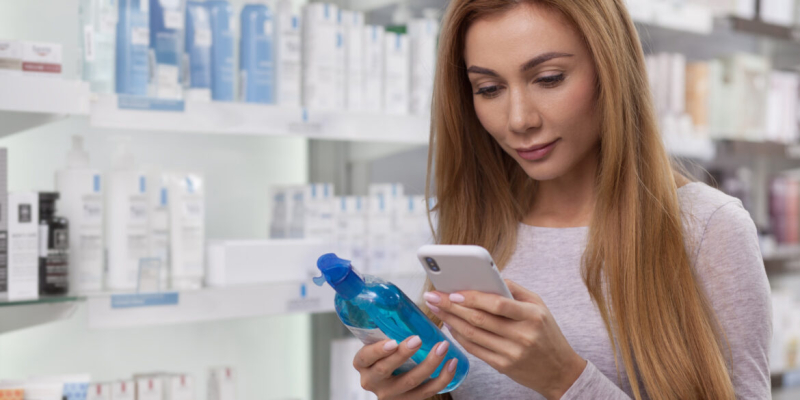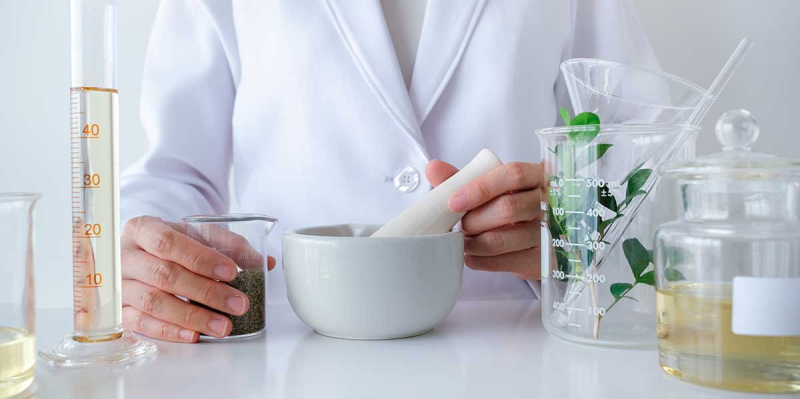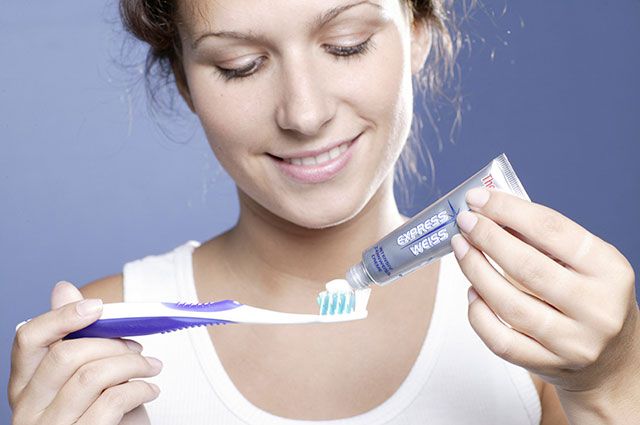
The most dangerous ingredients in cosmetics that you should avoid
1
The clean cosmetics trend has been around for several years therefore, every year the problem of cosmetic formulations and the content of toxic ingredients in them becomes more acute, along with the trend for conscious consumption. Figuring out complex ingredients on your own is sometimes quite difficult, so we've compiled a list of the most dubious ones to look out for when studying beauty product labels.
Parabens
Parabens represent a whole group of preservatives and antibacterial substances that prevent the spread of bacteria and the formation of mold in the product. Research shows that parabens mimic the effects of estrogen in the human body, causing significant damage to the body's reproductive functions, provoking thyroid dysfunction, obesity, and numerous types of cancer closely related to hormonal disturbances. Parabens especially affect teenage girls and pregnant women. The European Commission has banned the use of several types of parabens in personal care products: isopropyl, isobutyl, phenyl, benzyl and pentyl parabens. But in some countries they are still used.

Flavors and phthalates
Up to 3,000 synthetic or natural chemicals are used to give the product a pleasant aroma. As a rule, any perfume is considered a trade secret, which is strictly forbidden to disclose. You can also find phthalates in scented products, which make the smell more persistent. These are chemicals used in some products (nail polishes, hair sprays, various types of plastic materials) to make them flexible. , DBP and DEHP. Studies prove the direct influence of phthalates on the occurrence of obesity, type 2 diabetes, breast cancer, birth defects, infertility and cardiovascular disorders. And the smell itself is an involuntary provocateur of all kinds of allergies and asthma attacks.
Over the past few years, cosmetic giants such as Unilever, Procter & Gamble, Johnson & Johnson actively advocates full transparency in the provision of information about the content of aromatic substances in formulations.
Ethoxylates
Include polyethylene glycol (PEG), cetarets, olets and sulfates. Sulfates are responsible for sudsing in detergents such as shampoo and personal care products.
Some sulfates are synthetic, while others are derived from sulfur and petroleum, as well as from natural sources such as coconut and palm oils. Sodium sulfate is a very harsh cleaning ingredient on its own, which is why it has a bad reputation in hair care products. The fact is that sodium lauryl sulfate is converted to sodium laureth sulfate using a process called ethoxylation. A byproduct of this process is 1,4-dioxane, a chemical that the Environmental Protection Agency (EPA) considers a possible human carcinogen.
In July of this year, the Sephora retail chain introduced a mandatory requirement for brands to test for the permissible presence of 1,4-dioxane.
Formaldehyde
The most infamous preservative of all time, formaldehyde is commonly found in keratin hair products. Formaldehyde is universally known as an anthropogenic carcinogen, that is, an ingredient that causes cancer in humans, which is why this substance and all substances indirectly related to it have been categorically excluded from the composition of most cosmetics, such as, for example, nail polish. This dangerous component is used for some salon keratin procedures. It is especially dangerous for hair stylists who are forced to spend most of their time indoors. Sore throat, nosebleeds, red eyes are some of the few side effects.
Refined products
Mineral oil (petroleum jelly, paraffin) is a widely used moisturizer derived from petroleum and is often found in lip balms and face creams. There are about a thousand reasons to avoid petroleum products from the point of view of environmental friendliness. The unprocessed or slightly processed mineral oils used in production (not the cosmetic grade listed in the lip balm) are listed as carcinogens by the World Health Organization. After another study in 2016, scientists called for reducing the amount of mineral and petroleum-based ingredients that enter the body “in most lip cosmetics”.
Hydroquinone
Hydroquinone can be found in creams and serums for the skin with a whitening effect, which are also actively used in the treatment of pigmentation. It was originally approved in 1982, but a few years later it was temporarily withdrawn from the market for safety reasons (it turned out that the product in question contained mercury). Hydroquinone is associated with the occurrence of cancers, weakening of the immune system, and improper functioning of the adrenal gland.
Talc
The most common ingredient in powders and shadows is a mineral that contains magnesium, silicon, hydrogen and oxygen. Raw, unfiltered talc can be contaminated with asbestos-containing substances, i.e. carcinogens.
Triclosan

The antibacterial and antimicrobial chemical triclosan, found in hand sanitizers, soaps, mascara, and even toothpaste, may be one of the causes of liver fibrosis, skin cancer, and hormone disruption. Its effectiveness was also questioned. According to FDA (Food and Drug Administration) research, its properties are comparable to a bar of soap.
Silicon
Also known as silicon dioxide, silicon is used as an absorbent. in various products: from toothpastes to tonal products. The very nature of silicon is extremely controversial. Only one type is officially approved for use in cosmetics, namely amorphous silicon, not crystalline, also known as silica dust. Silicon also has a complex relationship with the environment. This applies to products with liquid silicon dioxide, which is contained in every face primer – silicone. Some silicones are not biodegradable.









Leave a Reply